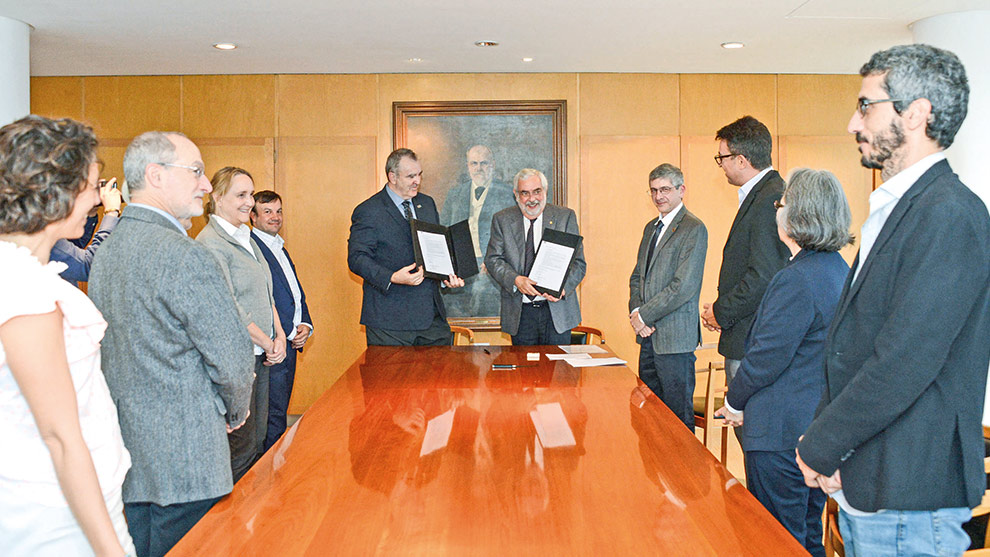The UNAM will participate in a project to build the largest radio telescope in the world. It will consist of more than 240 antennas, distributed in the USA and Mexico.
The National Autonomous University of Mexico (UNAM) will collaborate with the National Radio Astronomy Observatory (NRAO) in the ngVLA (next generation Very Large Array) project, which will create the most powerful radio telescope in the world.
Enrique Graue Wiechers, Rector of the UNAM, signed a Memorandum of Understanding with Anthony Beasley, director of the NRAO and the ngVLA project, formalizing the collaboration between UNAM and NRAO in this initiative for the next two years.
William Lee, Dean of Scientific Research in the UNAM, explained that this Observatory will consist of more than 240 antennas, distributed principally in the southern United States of Arizona, New Mexico and Texas, together with some antennas placed in the north of Mexico. In Mexico, the project will be led by the Institute for Radio Astronomy and Astrophysics (IRyA) of the UNAM.
During the signing of the agreement, in the Rectory Tower, Enrique Graue expressed his hope that this project will inspire a new generation of radio astronomers.
Anthony Beasley concurred and added that this new radio observatory will have the potential to visualize the formation of exoplanets, as well as detect the first galaxies to form in the Universe and contribute to improved studies of black holes.
Cutting Edge Science
William Lee referred to the improved technological capabilities of the new observatory. The set of antennas conforming the ngVLA will give it greater sensitivity, resolution and the ability to produce highly detailed images. He mentioned that it will provide radio astronomers with an order of magnitude higher sensitivity and resolution of astrophysical objects. The potential for scientific discovery is enormous over a wide range of topics such as exoplanets (planets around stars other than the Sun), processes associated with the formation of stars, and the formation and evolution of galaxies, among others. He remarked that this observatory will produce cutting edge science for the next 30 years.
The project is currently in the design stage with the aim that construction will start in 2025 and will last approximately 10 years. Scientific operations will start before 2035. William Lee added that the Agreement signed between UNAM and NRAO allows researchers from IRyA to collaborate with colleagues in the United States in the definition of technical aspects of the project, such as the locations of the sites for the antennas to be placed in Mexico. In addition, it opens up the possibility that astronomers from UNAM gain access to top-level international facilities that specialize in other wavelengths; the ngVLA collaboration adds to the work that is carried out at the National Astronomical Observatory in San Pedro Mártir, Baja California, at HAWC, located in Sierra Negra, Puebla, and the partnership that UNAM has with the Gran Telescopio Canarias.
Luis Alberto Zapata González, Director of IRyA, added that some of the antennas could be located in northern states such as Chihuahua, Sonora and Coahuila, with around seven antennas being planned for Mexico. He highlighted that experts from IRyA already have strong links with radio astronomers in the United States and are eager to collaborate in this great project since the ngVLA will be a cutting edge facility where the future of radio astronomy develop. He detailed that the first antenna will be ready in 2023 and this will be a prototype for the rest of the antennas to be located in the United States and Mexico.
Participants in the Signing
UNAM:
Enrique Graue Wiechers, Rector; William Lee Alardín, Dean of Sciences
IRyA:
Luis Zapata, Director; Drs. Susana Lizano, Carlos Carrasco, Eric Jiménez, Alfonso Trejo, Alice Pasetto.
United States of America:
Anthony Beasley, NRAO Director; Eric Murphy, ngVLA Project Scientific Director; Debra Fischer, Astronomy Division Director, National Science Foundation; Joe Pesce, NRAO Program Officer, National Science Foundation; Adam Cohen, President of Associated Universities, Inc.
Original text in Spanish: Mirtha Hernández and Diana Saavedra, Gaceta UNAM, Nov 7 2022





